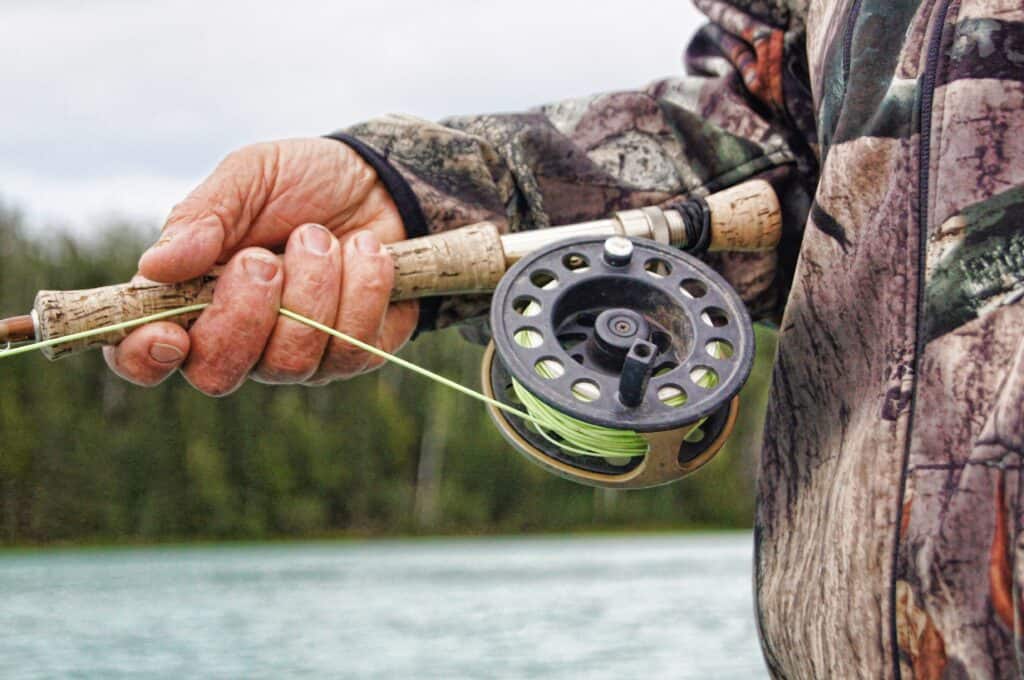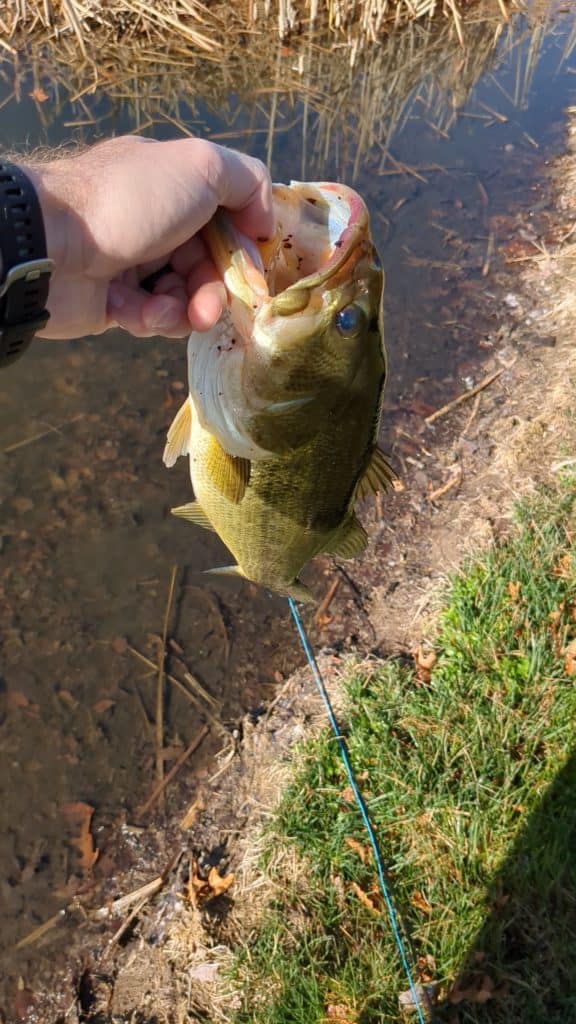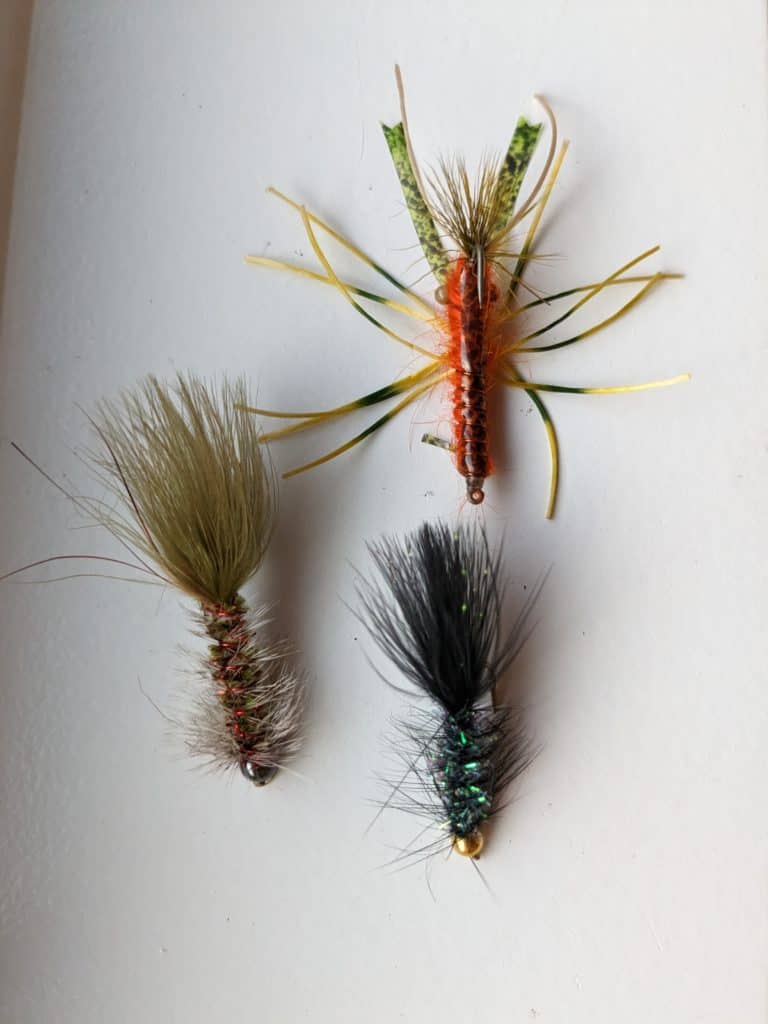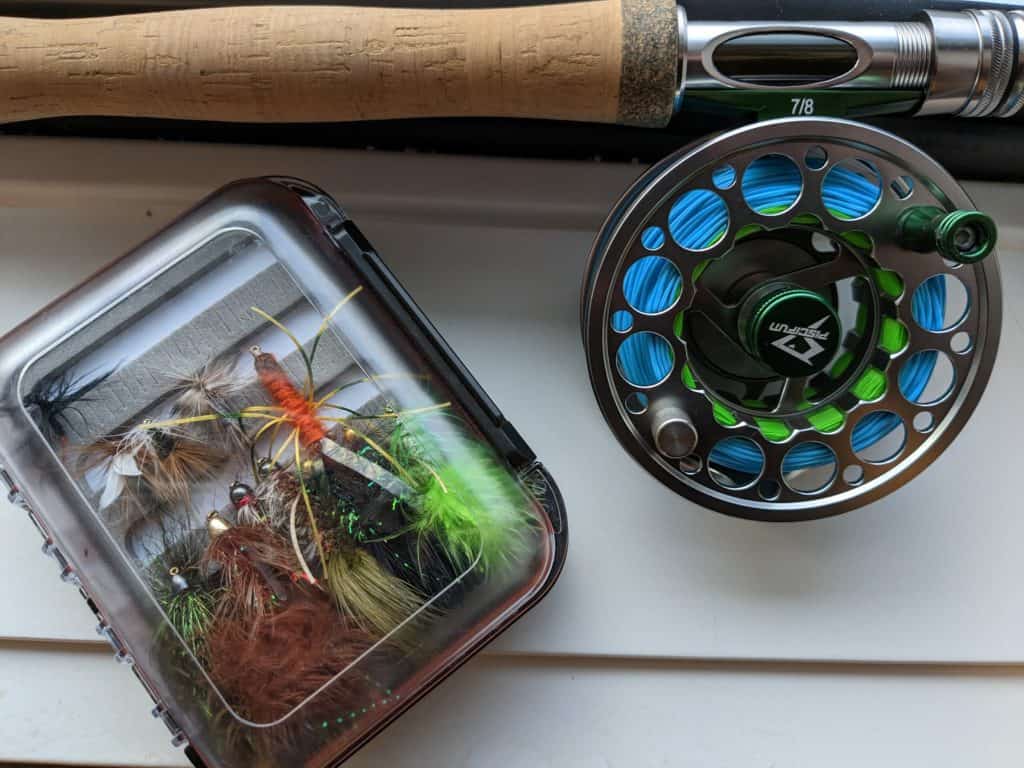Introduction to Bass fly fishing
If you’ve previously been hooked on traditional rod-and-reel angling methods, venturing into the world of fly fishing for bass can be a refreshing change. Throughout the Midwest, I’d wager 9 out of 10 anglers have never even held a fly rod, which is a pity. It’s an exciting, challenging, and, above all, rewarding style of fishing that can reignite your love for the sport. Whether you’re interested in smallmouth or largemouth bass, fly fishing techniques can help you take your angling game to new heights and can even alter your thinking on what lures you should be using when you decide to transition back to the big sticks.
Understanding Bass Behavior
Before delving into the specifics of fly fishing and the recommended setup, it’s essential to understand bass behavior. Unlike trout that feed primarily on insects, bass are predatory fish. They hunt and feed on smaller fish, crayfish, frogs, and even small aquatic birds. Fly fishing for bass, therefore, requires flies that mimic these creatures, enticing the bass to strike.
Fly Fishing Setup for Bass
When it comes to your fly fishing setup, selection is critical. Here’s a beginner’s guide to what you’ll need:

- Fly Rod: A 7-9 weight rod is suitable for most bass fishing situations. It’s strong enough to handle larger flies and fight robust bass. For my own bass fly fishing needs, I tend to stick with a 7 weight rod. This seems to be an all around nice weight rod that allows for you to get the most of of a fight while still having enough rod backbone to support the fight. If you are looking for a very budget friendly option (which let’s face it fly fishing is the exact opposite of budget) I recommend the Piscifun Sword Rod. Please don’t let this brand fool you, their fly rod and reel measure up to a variety of $200-$300 dollar rods that I have tried, I am not kidding.
- Fly Reel: Pair your rod with a sturdy, high-quality fly reel. Look for reels with a reliable drag system as bass are known for their strong, fast runs. In all honesty, however, fly rods are typically just fancy line holders. Unless you hook into a sizeable bass, you will not be reeling or even needing an expensive drag system in my opinion. For another affordable option, I also recommend the Piscifun Sword Fly reel. I will reiterate, I am not affiliated with Piscifun at all, I just truly don’t believe you can find a better fly fishing rod and reel at a better price point, or even close.
- Fly Line: Bass bugs and poppers require a specialized line to cast effectively. A weight-forward or bass bug taper fly line is best. On that note, having a reel that has a floating line and a reel with a sinking line can enable you to fish most of the lake.
- Leaders and Tippets: A 7-12 foot leader with a 10-12 lb. tippet is ideal. This setup offers the strength required to cast larger flies and withstand aggressive bass strikes. Often, I use a mono tippet and have no issues with bringing in a range of healthy fish.
- Flies: If you are new to this blog, let me fill you in on a little secret. Topwater fishing is in my blood, and any chance I can get to push that down others throats I will. To that tune, one of the most popular flies you will find for bass fly fishing is a popper style fly. Besides a popper, a wooly bugger is an absolute staple for fly fishing for bass. In regards to colors for a wooly bugger, you can never go wrong with a green or black fly (as seen below in photos).


Bass Fly Casting Techniques & Lures
Fly casting for bass involves a bit more power and distance compared to traditional fly fishing for trout. Mastering the double haul and roll casting techniques will enable you to deliver larger flies accurately and efficiently. Practice is key when mastering these techniques, so don’t be disheartened if your first few attempts aren’t perfect. For some more information and a how-to video on how to effectively do the double haul and a deep dive into the cast from Mad River Outfitters and Flip Pallot (he is a legend in the fly fishing world, FYI).
You will most likely be using the following lures when fly fishing for bass:
- Streamers – Clousers that resemble your local bait will do best. However, streamers that have a white with variety of flash will almost always produce regardless of where you might be targeting bass.
- Poppers & Mice – nothing beats topwater bass fishing, and it is even more fun when it is done on the fly. There are endless options for flies when it comes to mice and poppers, head to the local fly store or online and pick yourself up a variety.
- Wooly Buggers – this is one of the best flies all time, and will catch anything. Both smallmouth and largemouth bass go nuts for these. I am a huge fan of olive brown and black/gold for colors.
- Crayfish – almost any style crayfish fly will work for bass fishing. Remember to use sporadic retrieves and let is sink like a traditional football jig, and you will have great success.
Strategies for Fly Fishing for Bass
- Locating Bass: Bass often inhabit areas with cover like submerged vegetation, logs, and man-made structures. Cast your flies near these structures for the best results. However, be cautious with casting near a lot of cover. If you are like me, you will spend equal time actually fishing as you will plucking your flies out of the nearest branch or bush. If, by chance, you are ever looking to chase some feisty bass after a rain, refer to this article I wrote recently that will give you some hot tips on where to locate locations quickly.
- Timing: While bass can be caught at any time of the day, early morning and late evening are usually the most productive times for fly fishing. Pretty self explanatory, fish are always active in the early morning and evening.
- Retrieve Techniques: The way you retrieve your fly can greatly influence your success. Experiment with different techniques – slow and steady, erratic, or fast and pulsing. Just like you would with your crankbaits or chatterbaits, consistently change your retrieve. Bass key on different actions each time you are out, so don’t be a one trick pony.
Practice Makes Perfect
The most successful bass fly fishermen are those who have spent countless hours practicing their casting, learning about bass behavior, and refining their setup. While it might seem overwhelming at first, remember that each experience on the water is an opportunity to learn and improve. As a tip, watch a variety of YouTube videos on how to improve your fly casting in your yard. If you thought learning a baitcaster was tough, fly fishing is it’s abusive stepfather in regards to learning curve. Don’t give up and you will be rewarded.
A tried and true method to learn fly fishing for bass is simply practice casting dry casting in your yard or at the neighborhood park. To do this, all you need is a fly rod, reel, and fly line. Practice methods like double hauling, casting towards certain targets like a bucket or cup, or practice increasing your casting distance.
For the visual learners, this is a great video by FlyFishDan who simplifies the process and will accelerate your progress and get you to catching big bass on the fly.
Wrap Up Time
Fly fishing for bass is a thrilling way to experience the joys of fishing. With the right setup and techniques, you’ll be ready to tackle the challenge head-on and experience the adrenaline rush of that first bass striking your fly. Whether you’re an experienced angler or new to the sport, the world of fly fishing for bass offers an exciting and rewarding adventure.
Take your time to understand the nuances of the sport, get your hands on the perfect setup, and immerse yourself in the vibrant world of fly fishing for bass. Your trophy bass is out there, and with persistence and dedication, you’ll soon be reeling in a catch worth boasting about.
Remember, in the end, it’s not just about the fish you catch, but the experience of being in nature, mastering a skill, and creating memories that will last a lifetime. So, gear up, head to the water, and experience the magic of fly fishing for bass!
For some local states where fly fishing for bass can be an option, check out these articles:
Tight lines,
Dawson
